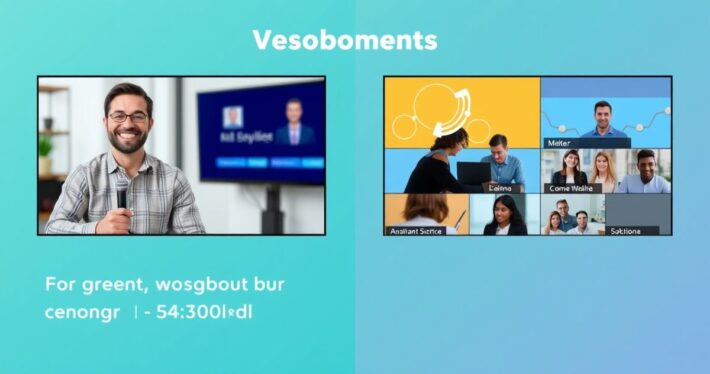Adapting webinar content for cultural and regional audiences.

Adapting Webinar Content for Cultural and Regional Audiences: The Ultimate Guide
Creating a successful webinar isn’t just about having great content—it’s about ensuring that content resonates with your audience. And when your audience spans multiple cultures and regions, that’s no small feat. Think about it: what works in New York might fall flat in Tokyo or Mumbai. Adapting webinar content for cultural and regional audiences isn’t just a nice-to-have; it’s a must if you want to maximize engagement, boost conversions, and build a truly global brand.
Now, here’s where it gets interesting. This isn’t just about translating words from one language to another. It’s about understanding cultural nuances, regional preferences, and even subconscious biases that shape how your audience perceives your message. So, how do you navigate this complex landscape? Let’s dive in.
Why Cultural and Regional Adaptation Matters
Let’s be honest—most of us default to creating content that reflects our own cultural framework. But when you’re speaking to a global audience, that approach can backfire. For example, humor varies dramatically across cultures. A joke that lands in the U.S. might confuse or even offend an audience in the Middle East. Similarly, colors, symbols, and even the way you structure your webinar can have cultural significance.
Case in point: I once worked on a webinar for a U.S.-based company targeting Southeast Asia. The original slide deck featured a lot of bold, direct language and assertive calls-to-action. But in many Southeast Asian cultures, a softer, more indirect approach is preferred. We rewrote the script, adjusted the tone, and incorporated more storytelling—and the result was a significant boost in engagement and conversions.
Key Strategies for Cultural and Regional Adaptation
1. Research, Research, Research
Before you even start creating your webinar, invest time in understanding your target audience’s cultural norms, values, and preferences. Tools like Hofstede’s Cultural Dimensions Theory can provide valuable insights into how different cultures perceive power, time, and communication.
Pro tip: Don’t rely solely on data. Talk to people from the region you’re targeting. Join online communities, hire local consultants, or conduct surveys to gather firsthand insights.
**2. Adapt Your Language and Tone
Translation is just the tip of the iceberg. Think about idiomatic expressions, slang, and even sentence structure. For instance, German audiences tend to appreciate detailed, formal content, while Brazilian audiences often respond better to conversational, informal language.
Example: Instead of saying, “This is the best product on the market,” you might say, “This product has been trusted by thousands of satisfied customers” for cultures that value community and consensus.
**3. Adjust Visuals and Design
Colors, images, and symbols carry cultural meanings. For example, white symbolizes purity in Western cultures but is associated with mourning in some Asian cultures. Similarly, gestures and body language in your webinar videos can have different interpretations.
Here’s a quick comparison to illustrate this:
| Element | Western Audience | Middle Eastern Audience | Asian Audience |
|---|---|---|---|
| Color Red | Excitement, Danger | Power, Wealth | Good Luck, Joy |
| Hand Gestures | OK sign = Approval | OK sign = Offensive | Varies by region |
| Direct Eye Contact | Confidence | Respectful | Can be seen as aggressive |
**4. Localize Your Offer
Your webinar offer needs to align with regional economic realities and cultural values. For example, a “buy now, pay later” offer might work well in the U.S., but in countries with lower credit card penetration, alternative payment methods like cash on delivery might be more effective.
**5. Use Regional Examples and Case Studies
People connect with what’s familiar. Incorporate examples, stories, and data that are relevant to the region you’re targeting. If you’re launching a product in India, for instance, highlight how it’s solved a problem for similar companies in the region.
Overcoming Common Challenges
Adapting webinar content for different audiences isn’t always easy. Here are some common challenges and how to overcome them:
- Time Constraints: Creating multiple versions of a webinar can be time-consuming. Solution? Use templates and AI tools to streamline the process.
- Resource Limitations: Translating and localizing content can get expensive. Solution? Focus on key regions first and scale gradually.
- Cultural Insensitivity: It’s easy to unint offend. Solution? Always have your content reviewed by someone from the target culture.
Real-World Example: How [Company X] Nailed It
Let’s look at a real-world example. [Company X], a SaaS provider, wanted to expand into Latin America. Their original webinar was highly technical and data-driven, which worked well in the U.S. but didn’t resonate with Latin American audiences.
Here’s what they did:
- Simplified the language and added more storytelling.
- Used vibrant visuals that reflected Latin American culture.
- Included testimonials from local businesses.
- Offered a payment plan tailored to the region’s economic context.
The result? A 40% increase in attendance and a 25% boost in conversions.
Tools to Help You Adapt Your Webinar Content
If you’re feeling overwhelmed, don’t worry—there are tools that can help. Our AI-powered webinar creation tools ecosystem, for example, includes features like:
- Slide Outline Creator: Helps you balance education and engagement while considering cultural nuances.
- Webinar Offer Builder: Structures pricing and value propositions that align with regional preferences.
- High-Value Bonus Brainstormer: Generates bonus ideas that resonate with specific cultures.
- Risk-Reversal/Guarantee Generator: Creates guarantees that make “yes” safer than “no” in any region.
Final Thoughts: Why This Matters More Than Ever
In today’s globalized world, adapting your webinar content for cultural and regional audiences isn’t just a competitive advantage—it’s a necessity. Whether you’re targeting one region or dozens, the effort you put into cultural adaptation will pay off in higher engagement, better conversions, and stronger relationships with your audience.
So, what’s your next step? Start by identifying the key cultures and regions you want to target, then use the strategies and tools outlined above to create webinars that truly resonate. Trust me, your audience will notice the difference—and so will your bottom line.



